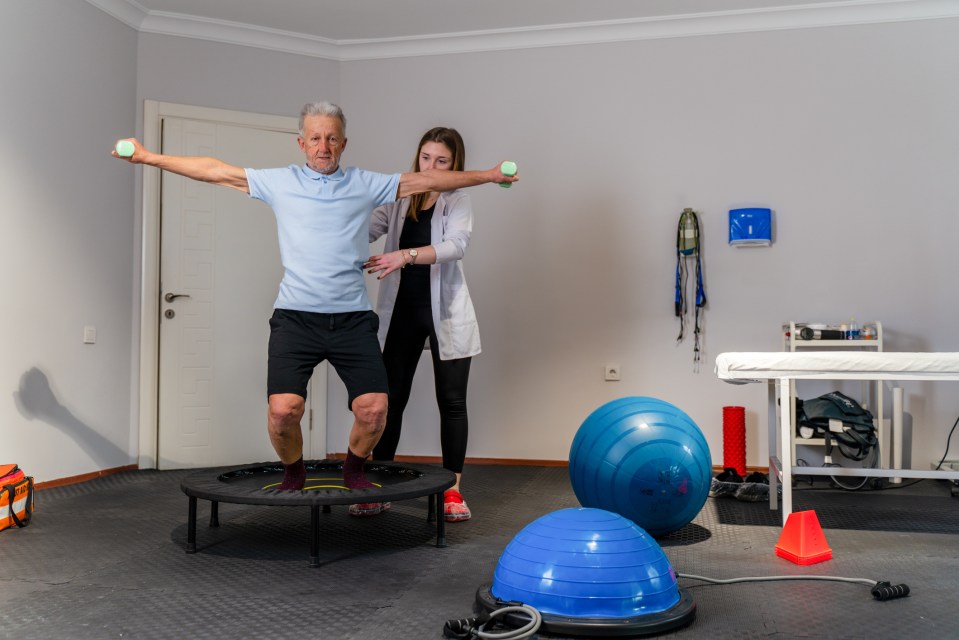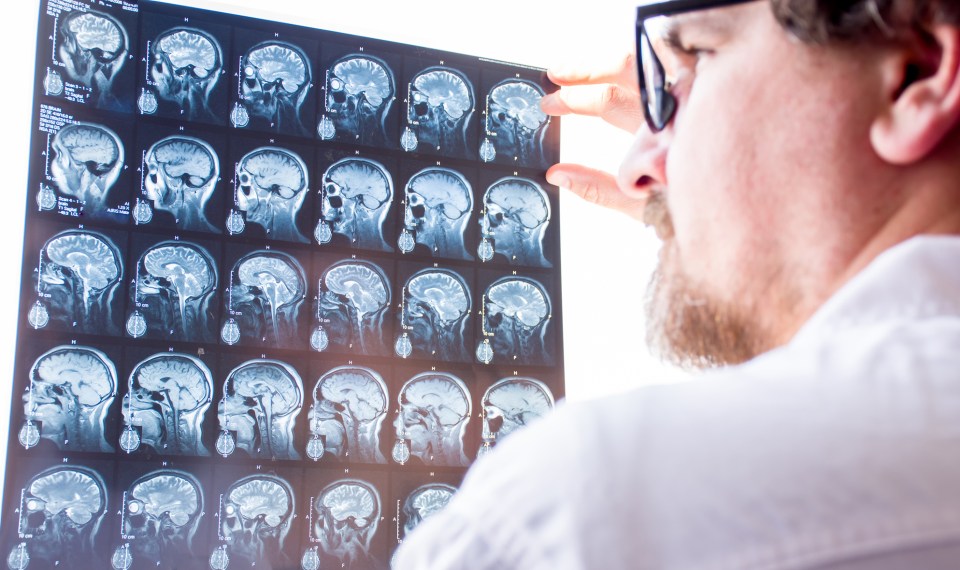Summary
Parkinson’s disease is a progressive neurological disorder that impacts movement. While there are a variety of ways to treat the condition, exercise is proven to be one of the most effective at managing the symptoms.
That’s why physical therapy for Parkinson’s could play a key role in your treatment plan at all stages of the disease. As experts of movement and exercise, a physical therapist can help you improve your strength and balance and address the symptoms associated with your Parkinson’s.
“Exercise is the only proven thing that can combat the symptoms,” said Susha Thomas, director of therapy operations at Encompass Health Rehabilitation Hospital of Cypress in Texas, and author of “Parkinson’s Disease—Reclaim Your Life—Tips to Help Manage Your Symptoms.” “The earlier you can get treatment from a physical therapist, the better.”
Thomas is a physical therapist by trade and specializes in the treatment of neurological disorders, specifically Parkinson’s. She said that in order to understand your treatment options, you must first understand what causes the symptoms.
Parkinson's and Rehabilitation
Learn more about how physical therapy in an inpatient rehabilitation setting can benefit those with Parkinson's. Find and Encompass Health location near to to talk to one of our experts.
Find a LocationUnderstanding Parkinson’s and Its Symptoms
One of the telltale signs of Parkinson’s is smaller, slower movements, Thomas said, which is caused by a decrease of dopamine in the brain.
“One of the main functions of dopamine is it helps with normal movements and motion,” she said. “We want efficient movements, and we need that dopamine in our brain to get that. With Parkinson’s, you have a decrease in that chemical. That means movements are less efficient, smaller and slower. It’s not your fault. Your brain is giving your muscles the wrong message.”
Since movement and motion are less efficient, physical therapy for Parkinson’s focuses on exaggerated movements and exercises.
Physical Therapy for Parkinson’s
While a resting tremor is often the most common symptom associated with Parkinson’s, not all diagnosed with the disease experience this. What most do experience, though, is the slower, smaller movements.
Some of the most common symptoms of Parkinson’s that physical therapy can address include:
- Slow movements known as bradykinesia
- Shuffling walk
- Softer voice
- Stiffness or freezing
- General balance issues
Thomas said physical therapy for Parkinson’s should include repetition of exaggerated exercises and big movements to help retrain the brain and create a new message to the muscles to perform movements bigger.
“The brain has the ability to rewire itself,” she said. “You need to create a new pathway that will tell your body to do things bigger. No matter what we have our patient doing, we need to have them overexaggerating it.”
Parkinson’s exercises could include repeated leg kicks or taking large steps. “I like to have a visual cue like tape and say, ‘OK take a step and aim for the tape,'” Thomas said. Initially, she added, it could feel silly or unnatural, but with practice and repetition, symptoms improve.
Your physical therapist might use tools such as a metronome and have you walk to the beat. As you progress in your therapy, exercises and movements should become more challenging and be layered with thinking and problem-solving tasks.
“I had a patient once who was really having difficulty doing just about everything,” Thomas recalled. “We got him to a point, though, that he was walking without an assistive device. When we got to that point, we started adding to the cognitive load. We’d have him walk and count or bounce a ball when walking. The more challenges you give as a patient progresses, the better their chances when they get home.”
In addition to challenging her patients mentally, Thomas also adds voice exercises to the mix, such as singing loudly to help with the softer voice often associated with Parkinson’s. Core and balance exercises are also key in preventing falls and improving mobility.
Inpatient vs. Outpatient
Physical therapy for Parkinson’s can be provided in both an inpatient rehabilitation setting and an outpatient one. If you’re able to, Thomas recommends inpatient rehabilitation, since in this setting you will receive daily therapy for approximately 15 hours a week, as opposed to only 2 hours during the one to two sessions a week that are typically prescribed in outpatient therapy.
“If you qualify for inpatient rehabilitation, that’s the best because you will get three hours of intensive therapy five days a week,” she said. “This helps the brain change. The more therapy you have, the better chance your brain will remember those changes.”
In the inpatient rehabilitation setting, you will receive not only physical therapy, but also occupational therapy and, if needed, speech therapy. Your multidisciplinary care team also includes rehabilitation doctors and nurses, a pharmacist, case manager and dietitian.
Working together, your team will create a unique care plan to help you get back to your life and community and live is independently as possible.
When to Start Therapy and Exercise for Parkinson’s
It’s never too soon to start physical therapy for Parkinson’s, Thomas said. If you have Parkinson’s-like symptoms, see a neurologist first. Then if diagnosed, make plans to see a physical therapist and start an exercise program.
In her 20 years as a physical therapist, Thomas said she’s seen many individuals with Parkinson’s give up hope, but once they begin working with a physical therapist on exaggerated motions and exercises, it changes their outlook and life.
“I’ve had so many patients who were ready to give up, and then we make these changes, and it has a huge impact on their lives,” Thomas said. “This knowledge needs to be spread as much as possible, because it really can make a huge difference in quality of life.”
The content of this site is for informational purposes only and should not be taken as professional medical advice. Always seek the advice of your physician or other qualified healthcare provider with any questions you may have regarding any medical conditions or treatments.



